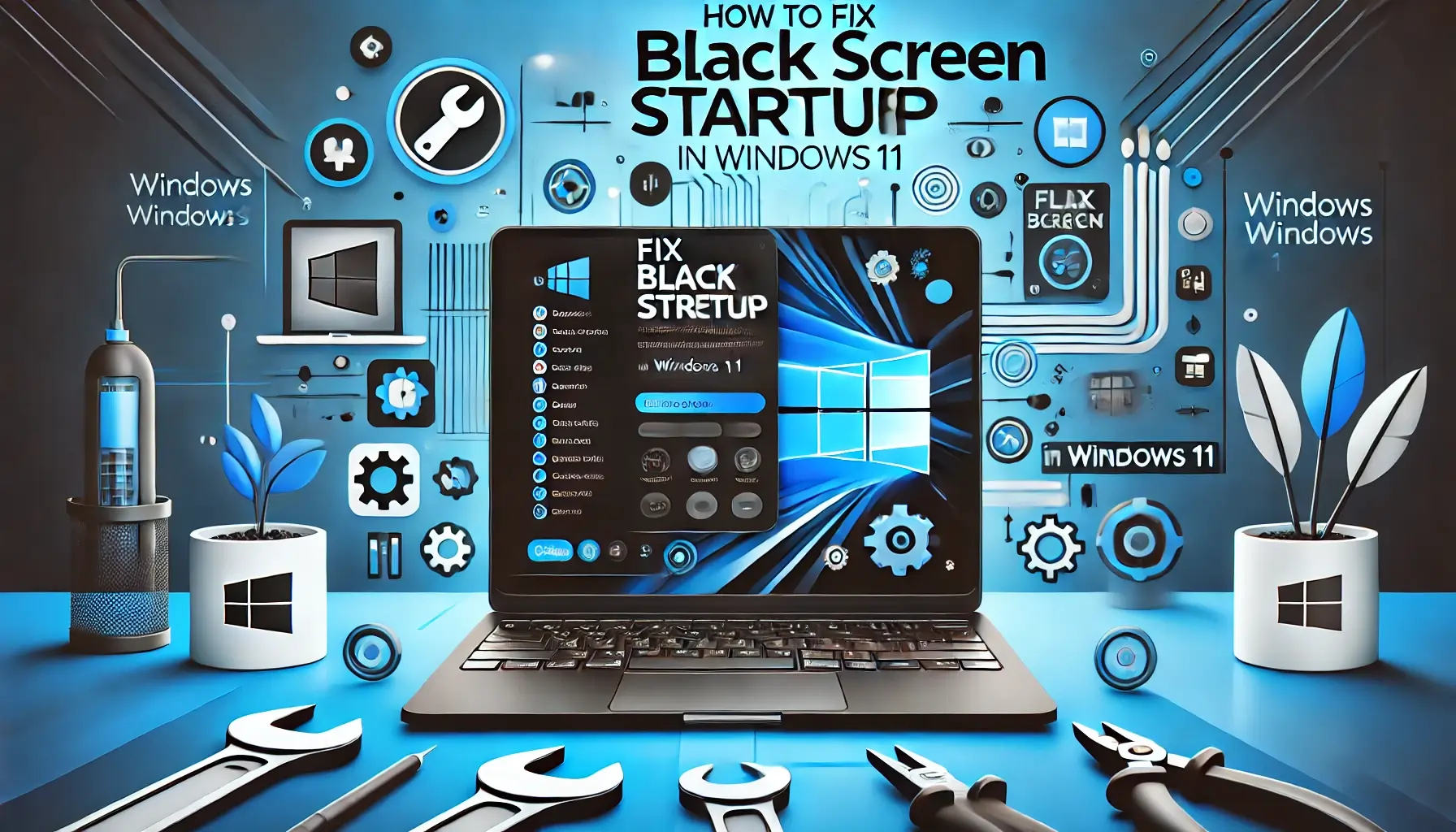Experiencing a black screen during startup in Windows 11 can be frustrating and alarming. Whether you’re booting up your PC or waking it from sleep, a black screen can prevent you from accessing your files and applications. Fortunately, there are several methods to troubleshoot and resolve this issue. In this guide, I’ll share effective solutions to help you fix a black screen startup in Windows 11.
Common Causes of Black Screen
Before diving into solutions, it’s important to understand what might cause a black screen at startup. Some common reasons include:
- Graphics Driver Issues: Outdated or corrupted graphics drivers can lead to display problems.
- Hardware Conflicts: Newly installed hardware may conflict with your system settings.
- Power Supply Issues: Inadequate power supply to your monitor or PC can cause a black screen.
- Windows Updates: Sometimes, updates can cause compatibility issues leading to display problems.
Steps to Fix Black Screen Startup

1. Check Your Connections
Start by ensuring that all your cables are properly connected. If you’re using a desktop, check the connections between your monitor and the PC. For laptops, make sure the battery is charged, and try connecting it to a power source.
2. Perform a Hard Reset
A simple hard reset can often resolve temporary issues. Here’s how:
- Shut down your computer completely by holding the power button until it turns off.
- Disconnect the power cable and any peripherals (USB devices, external hard drives, etc.).
- If you’re using a laptop, remove the battery if possible.
- Press and hold the power button for about 15 seconds.
- Reconnect the power source (and battery if applicable) and turn on your PC.
3. Boot in Safe Mode
If the black screen persists, booting in Safe Mode can help diagnose the issue. Here’s how to access Safe Mode:
- Start your PC and interrupt the boot process three times (turn it off while it’s booting).
- On the fourth boot, Windows should enter the Automatic Repair mode. From here, select Advanced options.
- Choose Troubleshoot > Advanced options > Startup Settings > Restart.
- Once your PC restarts, select 4 or press F4 to enter Safe Mode.
In Safe Mode, you can uninstall problematic drivers or applications.
4. Update or Roll Back Graphics Drivers
If you can boot into Safe Mode, updating or rolling back your graphics drivers can resolve the issue:
- Right-click on the Start menu and select Device Manager.
- Expand the Display adapters section.
- Right-click on your graphics driver and select Update driver. Follow the prompts to update.
- If the issue started after a recent update, you can also choose Roll back driver.
5. Check for Windows Updates
Sometimes, a black screen can be fixed by updating Windows. Here’s how:
- Press Windows + I to open Settings.
- Go to Windows Update in the left sidebar.
- Click on Check for updates and install any pending updates.
6. Run System File Checker
Corrupted system files can also lead to a black screen. You can run the System File Checker to repair them:
- Open the Start menu and type Command Prompt.
- Right-click on it and select Run as administrator.
- Type the following command and press Enter:
sfc /scannow- Wait for the process to complete and follow any prompts.
7. Perform a System Restore
If none of the above solutions work, you might want to consider performing a System Restore to revert your PC to a previous state:
- Boot into the Advanced startup options as described earlier.
- Select Troubleshoot > Advanced options > System Restore.
- Choose a restore point before the black screen issue began and follow the prompts.
8. Reset Windows
As a last resort, you can reset Windows 11, which will reinstall the operating system while keeping your personal files (if you choose that option). Here’s how:
- Boot into the Advanced startup options.
- Select Troubleshoot > Reset this PC.
- Choose to keep your files or remove everything, then follow the prompts.
Conclusion
A black screen at startup can be a frustrating experience, but with these troubleshooting steps, you can resolve the issue and get back to using your Windows 11 PC smoothly. If the problem persists after trying these methods, it may be worth consulting a professional technician for further assistance.

